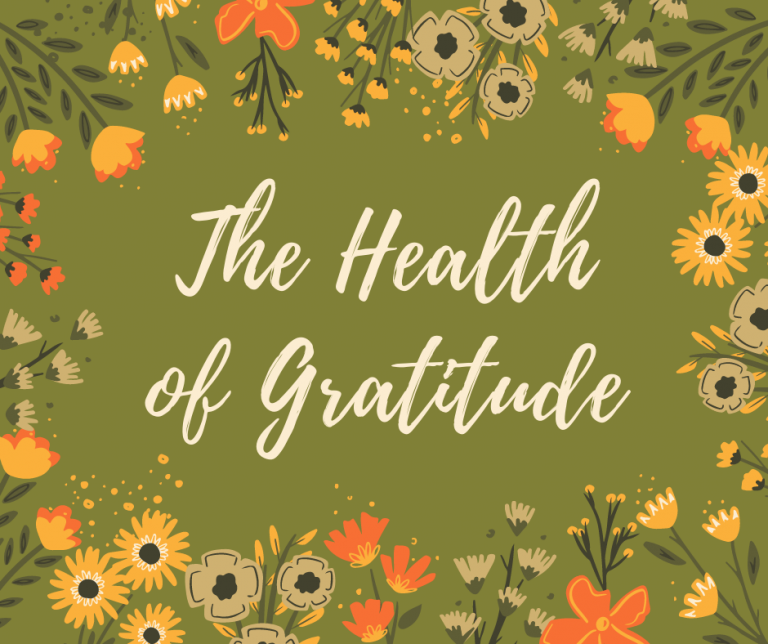
by ckistler | Nov 19, 2020 | Financial Planning

The COVID-19 pandemic has changed so much of our world, from day-to-day activities to long-range plans. But one thing hasn’t changed: the need for life insurance. If you have put off getting it—or more of it—here are three reasons to take a closer look now.
1. Life insurance offers financial protection.
And it can be your family’s financial bedrock, providing protection against unforeseen events. Unfortunately, many Americans are uninsured or underinsured: Just 50% of Americans own a policy, according to the 2020 Lincoln Financial Group Life Insurance Awareness Month Survey.
The COVID-19 pandemic, however, has put the value of life insurance back into the spotlight. More than a third of those surveyed said they think life insurance is more important to own now due to the pandemic, while a third also said they have or are planning to purchase new or additional life insurance.
Of those surveyed, that intent to buy life insurance was even greater among younger Americans, particularly Millennials. That’s great news, as they are often reaching new milestones in life such as starting a family or buying their first home.
2. There’s more to life insurance than you may think, including living benefits.
The top reasons people cited in the survey for purchasing life insurance were to cover funeral related expenses and to replace lost income to their family.
That make’s perfect sense. In its purest form, as a source of income replacement when someone dies, the tax-free death benefits of life insurance ensures your loved ones are taken care of financially so they can payoff final expenses and debt.
But there are also policies that also provide “living benefits” that can address holistic financial needs such as:
- Providing supplemental retirement income
- Paying for long-term care expenses
- Protecting a business
And these living benefits really appeal to people: 45% of those surveyed said they would be more likely to purchase life insurance if it provided more than just death-benefit protection, and you could use it for future needs or emergencies while you’re alive. The good news is these types of policies already exist!
3. Applying for life insurance may be easier and less expensive than you think.
The top two obstacles people cited for not having life insurance were the cost and competing financial priorities, according to the survey. But in reality, life insurance can be pretty affordable. In fact, if you’re healthy, you may be able to get term life insurance coverage for less than your monthly utility bill or the amount you spend each week on your daily morning coffee. The wide range of options available mean there is a policy to fit different budgets.
Technology innovations are also transforming how we buy life insurance, from a long and cumbersome process to one that’s simpler, faster and friendlier. And 40% of Millennials surveyed said they would be more likely to purchase life insurance if they could do so completely electronically. This is actually already possible! You can receive a quote and apply for a policy online, and then have the policy signed and delivered electronically. Many insurance companies even offer the opportunity for healthy individuals to bypass underwriting labs. Today, policies can potentially be issued in as little as 24 hours.
While the global pandemic has increased awareness around the need for life insurance, life insurance should always be viewed as an important financial planning tool that can help families build, manage, protect and pass on their assets and legacy. I’d encourage you to speak with a financial or insurance professional or your workplace benefits specialist to help you determine where life insurance fits into your financial plan, ensure the coverage you have continues to meet your needs, or explore your options if you need coverage or more of it.
(Lincoln Financial Group is the marketing name for Lincoln National Corporation and its affiliates. Lincoln Financial Group survey conducted by ENGINE INSIGHTS July 17-19, 2020. The views expressed are those of the authors as of the date specified. LCN: 3246616-091720)
By Stafford Thompson, Jr.
Originally posted on Life Happens

by ckistler | Nov 16, 2020 | Health & Wellness
The month of November has a central focus on the holiday, Thanksgiving. Linked with this holiday is the emotion of gratitude. We want to take a closer look at this emotion and see how it is linked to better health and give you some practical tips on how to increase the size of your gratitude bucket.
The Definition of Gratitude
The emotion of gratitude is defined as “the quality of being thankful; readiness to show appreciation for and to return kindness.” We are familiar with the act of “thank you” to represent gratitude, but it also includes thinking on positive things that have happened during the day or your life, meditating on positive thoughts, and feeling grateful.
The Health of Gratitude
Beyond making someone feel appreciated, gratitude also has other benefits. In fact, there are physical health benefits associated with the act of gratitude. The Greater Good Science Center produced a list of benefits to gratitude.
For the individual:
- increased happiness and positive mood
- more satisfaction with life
- less materialistic
- less likely to experience burnout
- better physical health
- better sleep
- less fatigue
- lower levels of cellular inflammation
- greater resiliency
- encourages the development of patience, humility, and wisdom
In addition to these above benefits, psychologically, the act of gratitude has been shown to reduce toxic emotions like envy, frustration, resentment, and regret. Those who focus on gratitude have even been reported to visit the doctor less!
The Act of Gratitude
So, how do you practice gratitude in your everyday life? Here are some easy-to-do exercises to strengthen your gratitude muscles:
- Say thank you
- Keep a gratitude journal
- Write handwritten thank-you notes
- Think/meditate on positive thoughts
- Smile!
- Put sticky notes around your home and workspace to remind you to be grateful
By practicing gratitude, you are not only sowing positivity in someone’s heart, you are also reaping health rewards like lower blood pressure and decreased levels of stress and depression. This simple act, that we’ve all been taught since we were born (Moms always remind you to say, “thank you!”), has far-reaching benefits so start flexing your muscles of gratitude today.

by ckistler | Nov 16, 2020 | Benefit Management, Open Enrollment
As the weather turns cooler and shopping centers get busier, it’s easy to surmise that it’s nearing the end of the year. Are we all ready for 2020 to be over?! Yes, please! Since we are closing in on 2021, it’s time for you to maximize your healthcare plan by taking advantage of end-of-year healthcare benefits.
HAVE YOU MET YOUR DEDUCTIBLE YET?
Before you continue reading, look over your insurance plan details and check your deductible amount. Then, check with your HR advisor and see where you are with your benefits per their records and the insurance company records to ensure you have all the information you need regarding these details. Now that you have all your ducks in a row, let’s look at some ways to make sure you are maximizing your healthcare benefits before year-end.
THINGS TO DO LIST
- Refill prescriptions—maybe get 90-day supplies so they last beyond the start of the new year
- Schedule lab work
- Schedule imaging
- Visit the dermatologist
- Visit the optometrist—get new glasses or contact lenses
- Schedule preventive screenings like:
- Endoscopy
- Colonoscopy
- Prostate cancer
- Lung cancer
- Schedule elective surgeries like:
- Hysterectomy
- Gallbladder
- Joint replacement
- Weight loss
- Thyroid
- Eye
- Back
- Go to physical therapy for an injury
- Visit your PCP for preventive care
- Visit the dentist
THINGS TO CONSIDER
Before you go whole-hog on scheduling these appointments, you need to consider some things first.
- Think about the additional costs associated with procedures like physical therapy post-surgery. You should calculate the cost of having the surgery this calendar year and starting PT after the new year begins and your deductible resets versus doing everything next year.
- Many dental plans have yearly maximums so it may be better to split up some dental procedures between this year and next.
- Make sure you stay in your network when you schedule these appointments or else your insurance coverage won’t be as robust as you thought.
- Use your FSA money before the end of the year because these funds are “use it or lose it.”
- The IRS does give you a grace period of 2 ½ months to spend your money
BONUS TIPS
As a couple bonus tips:
- Check your plan’s terms about coinsurance so you know if this will come into play even after meeting your deductible.
- Increase your HSA contributions to max out your account before the end of the year. The IRS, again, gives you some extra time in the following year to keep contributing to the prior year’s account. But, not maxing out your contribution amount means that you aren’t reaping the benefits of this tax-free money.
Making sure you are fully utilizing your healthcare plan at the end of the year is a smart move for every healthcare consumer. Begin crossing things off this “To Do List” today!

by ckistler | Nov 12, 2020 | Benefit Management, Open Enrollment
 As the weather turns cooler and shopping centers get busier, it’s easy to surmise that it’s nearing the end of the year. Are we all ready for 2020 to be over?! Yes, please! Since we are closing in on 2021, it’s time for you to maximize your healthcare plan by taking advantage of end-of-year healthcare benefits.
As the weather turns cooler and shopping centers get busier, it’s easy to surmise that it’s nearing the end of the year. Are we all ready for 2020 to be over?! Yes, please! Since we are closing in on 2021, it’s time for you to maximize your healthcare plan by taking advantage of end-of-year healthcare benefits.
HAVE YOU MET YOUR DEDUCTIBLE YET?
Before you continue reading, look over your insurance plan details and check your deductible amount. Then, check with your HR advisor and see where you are with your benefits per their records and the insurance company records to ensure you have all the information you need regarding these details. Now that you have all your ducks in a row, let’s look at some ways to make sure you are maximizing your healthcare benefits before year-end.
THINGS TO DO LIST
- Refill prescriptions—maybe get 90-day supplies so they last beyond the start of the new year
- Schedule lab work
- Schedule imaging
- Visit the dermatologist
- Visit the optometrist—get new glasses or contact lenses
- Schedule preventive screenings like:
- Endoscopy
- Colonoscopy
- Prostate cancer
- Lung cancer
- Schedule elective surgeries like:
- Hysterectomy
- Gallbladder
- Joint replacement
- Weight loss
- Thyroid
- Eye
- Back
- Go to physical therapy for an injury
- Visit your PCP for preventive care
- Visit the dentist
THINGS TO CONSIDER
Before you go whole-hog on scheduling these appointments, you need to consider some things first.
- Think about the additional costs associated with procedures like physical therapy post-surgery. You should calculate the cost of having the surgery this calendar year and starting PT after the new year begins and your deductible resets versus doing everything next year.
- Many dental plans have yearly maximums so it may be better to split up some dental procedures between this year and next.
- Make sure you stay in your network when you schedule these appointments or else your insurance coverage won’t be as robust as you thought.
- Use your FSA money before the end of the year because these funds are “use it or lose it.”
- The IRS does give you a grace period of 2 ½ months to spend your money
BONUS TIPS
As a couple bonus tips:
- Check your plan’s terms about coinsurance so you know if this will come into play even after meeting your deductible.
- Increase your HSA contributions to max out your account before the end of the year. The IRS, again, gives you some extra time in the following year to keep contributing to the prior year’s account. But, not maxing out your contribution amount means that you aren’t reaping the benefits of this tax-free money.
Making sure you are fully utilizing your healthcare plan at the end of the year is a smart move for every healthcare consumer. Begin crossing things off this “To Do List” today!

by ckistler | Nov 10, 2020 | Health & Wellness
 The month of November has a central focus on the holiday, Thanksgiving. Linked with this holiday is the emotion of gratitude. We want to take a closer look at this emotion and see how it is linked to better health and give you some practical tips on how to increase the size of your gratitude bucket.
The month of November has a central focus on the holiday, Thanksgiving. Linked with this holiday is the emotion of gratitude. We want to take a closer look at this emotion and see how it is linked to better health and give you some practical tips on how to increase the size of your gratitude bucket.
The Definition of Gratitude
The emotion of gratitude is defined as “the quality of being thankful; readiness to show appreciation for and to return kindness.” We are familiar with the act of “thank you” to represent gratitude, but it also includes thinking on positive things that have happened during the day or your life, meditating on positive thoughts, and feeling grateful.
The Health of Gratitude
Beyond making someone feel appreciated, gratitude also has other benefits. In fact, there are physical health benefits associated with the act of gratitude. The Greater Good Science Center produced a list of benefits to gratitude.
For the individual:
- increased happiness and positive mood
- more satisfaction with life
- less materialistic
- less likely to experience burnout
- better physical health
- better sleep
- less fatigue
- lower levels of cellular inflammation
- greater resiliency
- encourages the development of patience, humility, and wisdom
In addition to these above benefits, psychologically, the act of gratitude has been shown to reduce toxic emotions like envy, frustration, resentment, and regret. Those who focus on gratitude have even been reported to visit the doctor less!
The Act of Gratitude
So, how do you practice gratitude in your everyday life? Here are some easy-to-do exercises to strengthen your gratitude muscles:
- Say thank you
- Keep a gratitude journal
- Write handwritten thank-you notes
- Think/meditate on positive thoughts
- Smile!
- Put sticky notes around your home and workspace to remind you to be grateful
By practicing gratitude, you are not only sowing positivity in someone’s heart, you are also reaping health rewards like lower blood pressure and decreased levels of stress and depression. This simple act, that we’ve all been taught since we were born (Moms always remind you to say, “thank you!”), has far-reaching benefits so start flexing your muscles of gratitude today.






